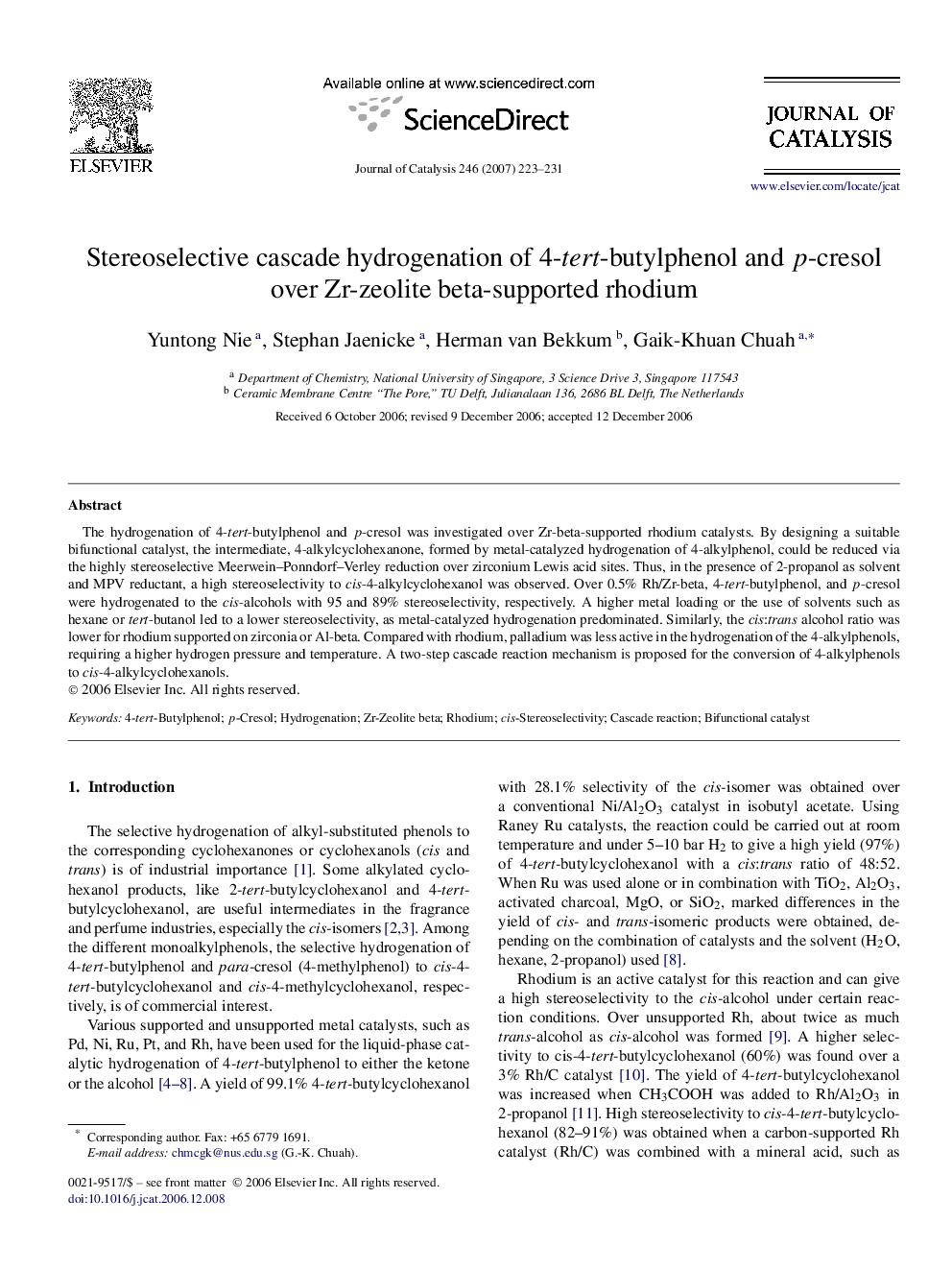| Article ID | Journal | Published Year | Pages | File Type |
|---|---|---|---|---|
| 62917 | Journal of Catalysis | 2007 | 9 Pages |
The hydrogenation of 4-tert-butylphenol and p-cresol was investigated over Zr-beta-supported rhodium catalysts. By designing a suitable bifunctional catalyst, the intermediate, 4-alkylcyclohexanone, formed by metal-catalyzed hydrogenation of 4-alkylphenol, could be reduced via the highly stereoselective Meerwein–Ponndorf–Verley reduction over zirconium Lewis acid sites. Thus, in the presence of 2-propanol as solvent and MPV reductant, a high stereoselectivity to cis-4-alkylcyclohexanol was observed. Over 0.5% Rh/Zr-beta, 4-tert-butylphenol, and p-cresol were hydrogenated to the cis-alcohols with 95 and 89% stereoselectivity, respectively. A higher metal loading or the use of solvents such as hexane or tert-butanol led to a lower stereoselectivity, as metal-catalyzed hydrogenation predominated. Similarly, the cis:trans alcohol ratio was lower for rhodium supported on zirconia or Al-beta. Compared with rhodium, palladium was less active in the hydrogenation of the 4-alkylphenols, requiring a higher hydrogen pressure and temperature. A two-step cascade reaction mechanism is proposed for the conversion of 4-alkylphenols to cis-4-alkylcyclohexanols.
